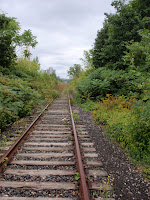(inspired by OKEJ, being OK in Swedish, from the subtitles to 'Anywhere But Here' with Susan Sarandon & Natalie Portman)
Up, Down, Appendices, Postscript.
| Otis Redding, Respect, 1965. what you want honey you got it and what you need baby you've got it all I'm asking is for a little respect when I come home do me wrong honey if you want to you can do me wrong honey while I'm gone but all I'm asking is for a little respect when I come home hey little girl you're so sweeter than honey and I'm about to give you all of my money but all I'm asking is for a little respect when I come home this is what I want this is what I need I got to got to have it give it everything I need   | Aretha Franklin, Respect, 1967. what you want baby I got what you need you know I got it all I'm asking is for a little respect when you come home hey baby just a little bit when you come home I ain't gonna do you wrong while you gone I ain't gonna do you wrong 'cause I don't want to all I'm asking is for a little respect when you come home just a little bit baby come on I'm about to give you all my money and all I'm asking in return honey is to give me my propers when you get home just a just a yeah baby ooo your kisses sweeter than honey and guess what so is my money all I want you to do for me is give it to me when you get home yeah baby whip it to me when you get home just a little bit just a little bit r e s p e c t find out what it means to me r e s p e c t take care of t c b sock it to me all the time keep on turning ride it out baby and I ain't lyin' ree ree ree ree stop please come home ree ree ree ree |
So ... respect. How do you show it? With money? Or with sex? Is it both? Or neither? Is it both sex & money plus something else?
All this makes me think of Dylan's Dignity, also ultimately undefined.
Here's something strange ... her sisters Erma & Carolyn were singing backup there and a big part of it, but no-where can I find any picture of the three of them together (?)
 I went over to the Art Gallery of Ontario (AGO) to see the David Blackwood exhibit.
I went over to the Art Gallery of Ontario (AGO) to see the David Blackwood exhibit.Twenty dollars to get in - Ai Ai Ai! Which was barely compensated by the lovely woman collecting it at the gate and her willing laugh.
But so, there they had some originals ... which I had never seen before; and after more than an hour (but not two, this is telling) ... I was entirely under-whelmed and disappointed. There was a small room devoted to Fire Down On The Labrador and the whale's smile expresses neither sardonic glee nor ... anything. And too many images, of punts & trap-skiffs, of splitting knives, of people's visages; simply did not relate to what I know of these things and the place, not at all. A parody of Newfoundland seems to be all that remains.
 About the same thing happened with Don Wright's Red Trench when I saw it years ago at The Rooms in St. John's. The whole out-of-scale clump of buildings seems a paean to what can be achieved in the way of distortion with enough passive-agressive angst - Chris Pratt and his brother Philip and the PHB Group Inc..
About the same thing happened with Don Wright's Red Trench when I saw it years ago at The Rooms in St. John's. The whole out-of-scale clump of buildings seems a paean to what can be achieved in the way of distortion with enough passive-agressive angst - Chris Pratt and his brother Philip and the PHB Group Inc..Icons tumbling all 'round eh?
 Just lucky I guess - that some of the vaginas I discovered, welcomed me.
Just lucky I guess - that some of the vaginas I discovered, welcomed me.Lol Pomeroy, Harold Ryan, and me; we were jigging one day off Little Paradise in Placentia Bay, when a whale passed just beneath us almost scraping the keel. We saw the bow-wave coming and held our breaths, hearts stopped; a gentle blessing.
When I showed up in St. John's on my Triumph-650 in ... 1968? ... one of the first people I met was an English prof, another CFA, who told me "the space is still open here." He was so right, and if I had been smart I would have gone straight out and bought some. It was more than a decade before I discovered how effectively the bureaucrat numbskulls would cripple & eliminate that openness - simple really - the k-k-Canada Building Code and extended municipal boundaries, done deal. And there it is - gone! Not forever of course.
"I caught this morning morning's minion," and "Generations have trod, have trod, have trod," were mainstays. But I guess this is where I run out from between the lines of Gerard Manley Hopkins' anodyne sentiment; which proves to be indeed a "windpuff-bonnet of fawn-froth." Run right off the end of "O let them be left, wildness and wet; long live the weeds and the wilderness yet," and into the (real) tall grass. Bah humbug.
Still and all, that was sometime before 1918 and this is 2011 ... give the guy a break, cut 'im some slack ... there's been some urbanization gone on in the meantime eh?
Not such a knucklehead as not to know that a park is not a forest. But then last week I went for a walk on the beach - and found that it is not a beach. Ok ok, ok, I already knew. I've known for years. The famous beaches of Ipanema & Copacabana are not beaches either. They regularly bring many many many truckloads of sand to keep them all looking like beaches, old sand dug from pits; build subtle and not so subtle breakwaters & spits to coerce the waves into doing their least. A verisimilitude of a beach then eh? But not a beach.
Walking back (to this place which is not very much like a home) I noticed that most of the seeds were gone from the tufts of pampas grass ... A man sees what he wants to see and disregards the rest. An almost entirely derivative pattern of thought then eh? Eh? Eh? Eh!
So I gathered some of the pampas seeds that were left on the stalks to plant in my garden (which is hardly a garden).


 Spring has sprung you know and it looks like one (or maybe two) of the Sumac seeds I planted has decided to grow.
Spring has sprung you know and it looks like one (or maybe two) of the Sumac seeds I planted has decided to grow.The seeds came from a tree at the side of an abandoned railway track, which is no more a forest than the park is - closer though, definitely closer. And I 'stratified' and buried as many of the seeds as would fit into one of the pots. Sumac seeds are known (and here) to be very difficult to germinate - but at the least they would provide compost.


 And now something has sprouted which might be one (or even two) of them. The clue is the tuft in the crotch of it - if you look at the picture you can see it - which is not usual in the weeds I see (weed being a relative term).
And now something has sprouted which might be one (or even two) of them. The clue is the tuft in the crotch of it - if you look at the picture you can see it - which is not usual in the weeds I see (weed being a relative term).Sumac trees in and of themselves are still wild ... as am I.
 (If increasingly breathless - the cigarettes are doing their work.)
(If increasingly breathless - the cigarettes are doing their work.)| Miss Jodie posted one of her poems, and I was off like a rabbit after old memories of spring. Versions of ee cummings' O sweet spontaneous here and here. Written sometime around 1920. It was once explained to me that cummings' punctuation represents orgasms & such like related. And he was known for so called 'typographical experiments' so exact placement might have been important to him. Difficult to know now, at this late date, exactly how it worked itself out. The dot between 'beauty' and 'how' is sometimes there, sometimes not. And the majority of what propagates around the web is about 'purient' (?) philosophers. Oh well. What's one orgasm more or less? I am suspicious of the 1976 edition I got from the Toronto Public Library, which claims to be somehow 'original' - I can't quite accept that he would settle for a type-writer font. | O sweet spontaneous earth how often have the doting fingers of prurient philosophers pinched and poked thee ,has the naughty thumb of science prodded thy beauty . how often have religions taken thee upon their scraggy knees squeezing and buffeting thee that thou mightest conceive gods (but true to the incomparable couch of death thy rhythmic lover thou answerest them only with spring) |

 Here we are, facing important if not ultimate choices and decisions, and the simple facts are nigh on impossible to communicate or understand.
Here we are, facing important if not ultimate choices and decisions, and the simple facts are nigh on impossible to communicate or understand.Canada permits 7,000 becquerels of (Tritium) radioactivity per litre of drinking water. Japan permits 100 becquerels of (Iodine-131) radioactivity per litre of drinking water for infants, and 300 becquerels for adults.
I spent the best part of a day trying to figgure it out, and came up with this (shamefully lame, I know):
All numbers except 'one' are approximate.All of this from obvious sources, Wikipedia and the like. But I still have no idea of what a number in becquerels actually represents in terms of effect. There is exposure time and proximity to consider. I was thinking of trying to correlate with say, a sunburn, or the feeling you get dancing around a bonfire ... and how long would that take I wonder?
A becquerel is one radioactive atom decaying per second, a measure of 'activity'.
Both atomic mass and half-life figure into the becquerel equation, so the sizes (relatively small Tritium & relatively large Iodine) and half-lives (12 years for Tritium and 8 hours for Iodine-131) have already been factored in by the time you come up with a number in becquerels.
BUT decay of radioactive Iodine releases gamma (350 keV) & high-energy beta radiation (200-600 keV), and Tritium decay releases only (relatively) low-energy beta radiation (20 keV), and while Iodine tends to concentrate in thyroid tissue, Tritium tends not to stick very long.
KeV is kilo electron volts, a measure of energy and hence a measure of 'penetration' (see Kinsey maybe :-) - 200-600 keV beta particles are good for a millimetere or two. For reference, a thyroid gland (Adam's apple) is a few centimetres; keeping in mind that the Iodine that concentrates there does so throughout.
SO a direct comparison the 7,000 acceptable becquerels per litre of Canadian Tritium with the 100 (for infants) to 300 (for adults) acceptable becquerels per litre of Iodine-131 in Japanese drinking water doesn't wash (pardon the pun) ... when Tritium decays it forms Helium, so a wag might say "drink more Tritium and lighten up."
On the other hand, neither radioactive Iodine nor Tritium is found in nature to speak of. Tiny amounts are created by cosmic rays, but these are truly tiny: 2 becquerels per litre of Tritium; no number that I could find for Iodine but a ratio of stable to radioactive of 10 million to one. So ... very VERY little of this stuff around at all except for what we humans have made.
Nevermind that there are not just Tritium and Iodine-131 to be concerned about. And aside from radioactivity there are all of the endocrine disruptors and potential disruptors - What about that shit?
Here:
So, Cobalt - half-life 5 years, beta and gamma energies in the MeV range, and Molybdenum - half-life a few days, beta energies 100-600 KeV. These numbers are just guesses - it is too complicated for me to understand. And there is another Iodine, 134, and Cesium, Technetium, Barium and Lanthanum (that last one gives me pause, any relation to Laudanum?). What's the acceptable standard for all this then?
"In a new sign of the contamination problem, the Nuclear and Industrial Safety Agency said Saturday a sample of seawater taken Friday from a monitoring station at the plant showed the level of iodine 131 at 50 becquerels per cubic centimeter — 1,250 times the legal limit.
Drinking a half liter of that water would be equivalent to getting a 1 millisievert dose, the agency said, roughly the amount a person gets in one year from natural sources."
"The National Institute of Radiological Sciences said that the radioactivity of the water that the three injured workers had stepped into was 10,000 times the level normally seen in coolant water at the plant. It said that the amount of radiation the workers were thought to have been exposed to in the water was two to six sieverts.
Even two sieverts is eight times the new 250-millisievert annual exposure limit set for workers at Daiichi in the days after the disaster; the previous limit was 100. Tokyo Electric officials said that water with an equally high radiation level had been found in the Reactor No. 1 building, The Associated Press reported.
Skin exposures of two to six sieverts will cause severe burns, according to Dr. David J. Brenner, director of the Center for Radiological Research at Columbia University. But if those doses reach the whole body and not just the skin 'you’re at a very high risk of dying,' he said.
At a dose of four sieverts, half of the people exposed will die, Dr. Brenner said."
"Michael Friedlander, a former nuclear power plant operator in the United States, said that the presence of radioactive cobalt and molybdenum in water samples taken from the basement of the turbine building raised the possibility of corrosion as a cause.
Both materials typically occur not because of fission, but because of routine corrosion in a reactor and its associated piping over the course of many years of use, he said."
 With all of these measley shit-head bureaucrats on the case how is it that there is not a clear, understandable, and integrated standard for what is acceptable in drinking water?
With all of these measley shit-head bureaucrats on the case how is it that there is not a clear, understandable, and integrated standard for what is acceptable in drinking water? There's my garden, such as it is. If the sprouts turn out to be Sumac? Hallelujah! If not ... oh well. And if the Pampas grass don't grow? ... ok too ... all good.
There's my garden, such as it is. If the sprouts turn out to be Sumac? Hallelujah! If not ... oh well. And if the Pampas grass don't grow? ... ok too ... all good.Sage, Rosemary & Thyme so far ... and if you rub a single leaf between your fingers, arises an enchanting odour neither sweet nor bitter that is ... enough ... (see The Life and Times of Michael K).
(but true to the incomparable couch of death, thy rhythmic lover, thou answerest them only with ... spring)
Be well.
Postscript:

 At first there was nothing in the english press about the situation at Jirau where the workers rioted on the 17th. Jirau and Santo Antonio dams are part of the Madeira River hydroelectric complex being built in Brazil.
At first there was nothing in the english press about the situation at Jirau where the workers rioted on the 17th. Jirau and Santo Antonio dams are part of the Madeira River hydroelectric complex being built in Brazil.Eventually the Wall Street Journal picked it up - bringing to mind Noam Chomsky's recommendation to keep an eye on the business press (who have to report what is useful to the owners of this damned shebang).
The story is murky: union struggles, bad faith on all sides, government force; the stories here do not begin to tell it, not by any means:
Obras de Jirau estão paralisadas e trabalhadores abandonam o local, 17/03/2011. This article includes more photographs and a video - follow the link to the source below.
Trabalhadores de Jirau são alojados no Ginásio do Sesi em Porto Velho, 17/03/2011.
O fim da agonia: maior parte de operários de Jirau já seguiu as cidades de origem, 20/03/2011.
Brazil Sends Force To Jirau Dam After Riots, Wall Street Journal, Paulo Winterstein, March 18 2011.
Construction Resumes At Brazil's Jirau Hydro Dam After Riots, Wall Street Journal, Diana Kinch, March 21 2011.
I am trying to read Naomi Klein, The Shock Doctrine. Such a bushel and a peck and a BALE of nonsense and yet, a sort of truth too ... trying to paint reality with what amounts to 99% ideology ... This kind of writing seems more like a wedge to sort & separate readers into absolute believers & absolute deniers. And what use is that? Richard Wilkinson & Kate Pickett with their Spirit Level go the same way (if less so) it seems to me.
These people have got their minds around fundamental and essential notions; but they can't seem to write about it without pretending to be seagulls (that shit unpredictably from heights). Must be a failure of public education, is that it? They missed out on How-To-Write-A-Paragraph-101? Sick that day? Off smoking dope?
I hope the royalties deliver them all to comfortable cottages somewhere nice with a view of water.
Human beings live and exist only through contact with others. Right from It-Takes-Two-To-Tango on up through language and culture to the sublime (if you make it there). Maybe I should qualify it as 'fruitful' or 'fecund' contact ... maybe stress that it is not a hierarchy but a way, a story ... whatever. I find myself stopping again and again at this third-hand recounting of the Good Samaritan story. There it is.
Put Illich's notion up beside bourgeois christian forbearance and then do a 'compare & contrast'. The Amish understand this very well - there is simply nothing worse, nothing more full of death and yet not quite dead, than to be shunned. But you don't have to go to the extreme - just pretend neither to see who they are nor hear what they say and always be careful to step (adroitly) around them in the street and you'll be fine. (And never never never send cash in the mail.)


Comics for the 10's
"The Internet is changing human relations."
I know Rodolpho. You listen to me less and less.
"There are almost two billion people connected."
(Oh yeah?)
Appendices:
1. Obras de Jirau estão paralisadas e trabalhadores abandonam o local, 17/03/2011.
2. Trabalhadores de Jirau são alojados no Ginásio do Sesi em Porto Velho, 17/03/2011.
3. O fim da agonia: maior parte de operários de Jirau já seguiu as cidades de origem, 20/03/2011.
4. Brazil Sends Force To Jirau Dam After Riots, Wall Street Journal, Paulo Winterstein, March 18 2011.
5. Construction Resumes At Brazil's Jirau Hydro Dam After Riots, Wall Street Journal, Diana Kinch, March 21 2011.
6. Japan Encourages a Wider Evacuation From Reactor Area, Hiroko Tabuchi & Keith Bradsher & David Jolly, March 25 2011.
Obras de Jirau estão paralisadas e trabalhadores abandonam o local, 17/03/2011.
| Obras de Jirau estão paralisadas e trabalhadores abandonam o local - A Polícia confirmou ontem (16) que pelo menos 40 ônibus foram incendiados no canteiro de obras da hidrelétrica de Jirau, no Rio Madeira (RO). A confusão teria começado após uma briga entre dois funcionários das obras. Os trabalhadores, que aderiram aos atos, alegam que não existem condições mínimas nos alojamentos e que estão insatisfeitos com os salários. A Camargo Côrrea, empresa do consórcio que está construindo a hidrelétrica, afirma que tudo não passou de uma briga entre alguns trabalhadores e desmente as informações. Hoje (17) aconteceram novos tumultos no canteiro de obras e os trabalhadores marcham, pela BR-364, em direção à cidade mais próxima do canteiro de obras, Jaci Paraná. Eles ameaçaram atear fogo em tudo o que for da empresa. Os comércios de Jaci Paraná foram fechados. Com as novas manifestações, a empresa que havia emitido uma nota alegando que "tudo estava tranquilo" e que as obras haviam sido "retomadas normalmente", emitiu uma nova nota afirmando que as obras foram paralisadas. A Camargo Côrrea também afirmou que os funcionários foram retirados "para garantir sua segurança" e que não é verdadeira a informação "de que há qualquer insatisfação ou reivindicação trabalhista no empreendimento". Entretanto, há informações de que os ônibus foram negados aos trabalhadores que queriam sair do local. Segundo matéria publicada no jornal regional Rondoniaovivo, que entrou em contato telefônico com os trabalhadores, ocorreram pelo menos três mortes. Seriam dois vigias, um da margem esquerda e outro da margem direita, e um motorista, morto a pauladas. Ainda segundo o jornal a assessoria de comunicação do Comando da Polícia Militar informou à reportagem que não existe confirmação de mortes. O Secretário da Segurança de Rondônia, Marcelo Bessa, entregou um ofício ao governador Confúcio Moura requerendo a presença da Força Nacional no local. De acordo com o presidente da Assembleia Legislativa, Valter Araújo (PTB), o governador já alertou o Ministro das Minas e Energia Edson Lobão sobre essa situação de instabilidade nos canteiros de obras. O Parlamentar também afirmou que os consórcios não estão cumprindo com os acordos de compensação, feitos antes do início das obras. "Eles [os consórcios] cumpriram com cerca de 30% do que foi acordado, até mesmo a contratação de mão de obra, que deveria ser toda ela local, não cumpriram. Cerca de 70% dos trabalhadores são de outros estados. Pior é que eles querem que a policia expulse os revoltosos de lá, mas para onde esse povo vai? Certamente virão para a cidade, onde estarão desempregados e desesperados. Não podemos mais permitir essa situação". | Work at Jirau is stopped and workers are leaving the area - The police confirmed yesterday (the 16th) that about 40 busses were burnt in the yard of the Jirau hydro-electric project in Rio Madeira in the state of Rondônia. The confusion had started after a fight between two workers. Workers who joined in the action say that minimum accomodation standards were not met and that they were not satisfied with wages. Camargo Côrrea, one of the companies in the consortium which is building the plant, affirmed that (not?) everything began with a fight between a few workers and denied the information. Today (the 17th) there were new struggles in the yard and the workers marched via BR-364 towards the nearest town, Jaci Paraná. They were threatening to set fire to everything belonging to the company. Businesses in Jaci Paraná were closed. With the latest demonstrations, the company, which had released a note alleging that "everything was tranquil" and that the work had been "recommenced normally", put out a new note admitting that the work was stopped. Camargo Côrrea also said that their workers had been removed "to guarantee their security" and that the information "that there was some worker insatisfaction or demands in the matter," is not true. However, there is information that busses were refused to workers who wished to leave the area. According to what was published in the regional newspaper Rondoniaovivo, which was in contact by telephone with the workers, there were at least three deaths. They were two watchmen, one on the left side and one on the right, and a driver, beaten to death with sticks. Also according to the newspaper, the spokesman for the Military Police said that the deaths had not been confirmed. The Secretary for Security of Rondônia state, Marcelo Bessa, made an official request to Governor Confúcio Moura for troops in the area. With the support of the president of the legislative assembly, Valter Araújo, the Governor had already alerted the Minister of Mines and Energy, Edson Lobão, about the unstable situation at the workplaces. Bessa also said that the consortium had not fulfilling the agreements on compensation made before the project began. "They (the consortium) gave about 30% of what had been agreed, even contracting manual labour which, it had been agreed, would be entirely local. About 70% of the workers are from other states. Worse, they want the police to remove the demonstrators, but where will these people go? Certainly they will return to the town, where they will be unemployed and desperate. We cannot permit this situation." |
Trabalhadores de Jirau são alojados no Ginásio do Sesi em Porto Velho, 17/03/2011.
| Trabalhadores de Jirau são alojados no Ginásio do Sesi em Porto Velho Centenas de trabalhadores da Usina de Jirau chegaram há poucos instantes no Ginásio do Sesi, em Porto Velho, escoltados por dezenas de policiais militares. Eles permanecerão no local e o Estado e a Camargo Corrêa providenciarão alimentação. Segundo a assessoria de imprensa da PM, pelo menos 3 mil trabalhadores ficarão no ginásio, localizado no Bairro Lagoa, Zona Sul da Capital. | Jirau workers are housed in the SESI gymnasium in Porto Velho Hundreds of workers from Jirau have just arrived at the SESI (Serviço Social da Indústria - Social Services for Industry) gymnasium in Porto Velho, escorted by dozens of military police. They will stay in the area and the State (of Rodonia) and Camargo Corrêa will provide food. According to a military police spokesman at least 3 thousand workeers will stay in the gymnasium located in the Bairro Lagoa neighbourhood in the southern part of the capital. |
O fim da agonia: maior parte de operários de Jirau já seguiu as cidades de origem, 20/03/2011.
| O fim da agonia: maior parte de operários de Jirau já seguiu as cidades de origem Depois de três dias amontoados em boates e um ginásio em Porto Velho, a maior parte dos trabalhadores de Jirau já seguiu para suas cidades de origem, seguindo o cronograma ajustado pela Camargo Corrêa com as autoridades locais. A previsão é que até a segunda-feira todos que queriam retornar aos seus estados já tenham embarcado em aviões ou ônibus. Na manhã deste domingo era grande a movimentação de cerca de 700 trabalhadores no Ginásio do Sesi. Eles formavam longas filas e muitos diziam que estavam há mais de 20 horas aguardando questões burocráticas para embarcarem. Outra reclamação era a limpeza dos banheiros químicos, que gerou um forte odor em toda a região por mais de uma hora. Os trabalhadores estavam organizados em filas e aguardavam a liberação em uma cerca montada pela empresa responsável por Jirau. Por volta das 9h30min apenas duas funcionárias realizavam a triagem e liberavam os ônibus. Dezenas de policiais militares ainda fazem a segurança do local. | The end of the anguish: most Jirau workers have now returned to their cities of origin After three days piled up in clubs and a gymnasium in Porto Velho, most Jirau workers have returned to their cities of origin, according to the schedule arranged by Camargo Corrêa with local authorities. It is expected that by Monday all who wish to return to their states willl have left by air and bus. On Sunday morning there was a lot of movement among the 700 workers in the SESI gymnasium. They formed long lines and many said that they had been waiting more than 20 hours with questions around leaving. Another complaint was the clenliness of the chemical toilets that were producing a strong odour in the area for more than an hour. The workers were organized in lines and waited to pass a fence put up by the company responsible for Jirau. Beginning at 9:30 AM at least two officials were organizing access to the busses. Dozens of military police were still maintaining security in the area. |
Brazil Sends Force To Jirau Dam After Riots, Wall Street Journal, Paulo Winterstein, March 18 2011.
SAO PAULO (Dow Jones) -- Brazil's federal government on Friday authorized the presence of national security forces in the Amazon state of Rondonia after riots at the Jirau dam site halted construction on the 3,450-megawatt dam.
The government said in its official publication Friday that it was sending additional police to the region to ensure public order. The additional police presence will last 30 days and can be renewed.
Protesting workers at the Jirau dam have set fire to buses and damaged part of the worker housing at the site, according to press reports. Jirau is being built by Energia Sustentavel do Brasil, a group comprising France's GDF Suez SA (GSZ.FR), Brazilian construction company Camargo Correa and Brazil's state-controlled utility Centrais Eletricas Brasileiras (EBR, ELET6.BR), or Eletrobras.
Workers have complained about wages and abuse by security officials at the site, according to press reports.
According to the Estado news agency, the riots led the companies to remove remaining workers from the site and halt construction on the dam. The Jirau dam was set to begin operations in March 2012. The halt in construction could push back that date, Energia Sustentavel President Victor Paranhos told Estado.
GDF Suez, which coordinates press requests for the group, didn't immediately return calls seeking comment.
Camargo Correa' press official said that the company is still evaluating damages at the site and will continue to pay workers until they return to work.
Construction Resumes At Brazil's Jirau Hydro Dam After Riots, Wall Street Journal, Diana Kinch, March 21 2011.
RIO DE JANEIRO (Dow Jones)--Construction work resumed Monday at the Jirau hydroelectric dam in Rondonia state in the Brazilian Amazon after workers' riots, local Estado newswire said in a report. A new timetable will be announced for the plant's development after delays caused by the unrest, the agency said.
Work is also set to restart Tuesday on the construction of the neighboring Santo Antonio dam, also on the Rio Madeira river, Estado said.
Protesting workers at the Jirau dam last week set fire to buses and damaged part of workers' housing at the site, in a protest over wages and abuses by security officials at the site, according to press reports. Jirau is being built by Energia Sustentavel do Brasil, a group comprising France's GDF Suez SA, Brazilian construction company Camargo Correa and Brazil's state-controlled utility Centrais Eletricas Brasileiras, or Eletrobras.
Jirau, designed with a 3,450 megawatt capacity, may now start generating and selling energy in 2013, instead of recent expectations that this would occur in March 2012, Energia Sustentavel President Victor Paranhos told Estado.
Japan Encourages a Wider Evacuation From Reactor Area, Hiroko Tabuchi & Keith Bradsher & David Jolly, March 25 2011.
TOKYO — New signs emerged Friday that parts of the crippled Fukushima Daiichi nuclear plant were so damaged and contaminated that it would be even harder to bring the plant under control soon.
At the same time, Japanese officials began encouraging people to evacuate a larger band of territory around the complex.
Speaking to a national audience at a news conference on Friday night, two weeks after the magnitude 9.0 earthquake and the devastating tsunami that followed it, Prime Minister Naoto Kan dodged a reporter’s question about whether the government was ordering a full evacuation, saying officials were simply following the recommendation of the Japan Nuclear Safety Commission.
“The situation still requires caution,” Mr. Kan, grave and tired-looking, told the nation. “Our measures are aimed at preventing the circumstances from getting worse.” The authorities said that they would now assist people who wanted to leave the area from 12 to 19 miles outside the plant, and that they were now encouraging “voluntary evacuation” from the area.
Those people had been advised March 15 to remain indoors, while those within a 12-mile radius of the plant had been ordered to evacuate. The United States has recommended that its citizens stay at least 50 miles away.
“The state of the plant is still quite precarious,” Mr. Kan said. “We’re working hard to make sure it doesn’t get worse. We have to ensure there’s no further deterioration.”
In a new sign of the contamination problem, the Nuclear and Industrial Safety Agency said Saturday a sample of seawater taken Friday from a monitoring station at the plant showed the level of iodine 131 at 50 becquerels per cubic centimeter — 1,250 times the legal limit.
Drinking a half liter of that water would be equivalent to getting a 1 millisievert dose, the agency said, roughly the amount a person gets in one year from natural sources.
Hidehiko Nishiyama, deputy-director general at the safety agency, said that he expected the iodine to dilute rapidly, minimizing the effect on wildlife, and pointed out that fishing had been suspended in the area after the quake and tsunami.
One sign of possible deterioration in the plant itself came at Reactor No. 3. Workers who were trying to connect an electrical cable to a pump in a turbine building next to the reactor were injured when they stepped into water that was found to be significantly more radioactive than normal. On Friday, officials and experts offered conflicting explanations of what had gone wrong — but all pointed to greater damage to the reactor’s systems and more contamination there than officials had indicated earlier.
Two workers were exposed to radiation and burned when water poured over their boots and down around their feet and ankles, officials said. A third worker was wearing higher boots and did not suffer the same exposure.
Like the injured workers, many of those risking their lives are subcontractors of Tokyo Electric Power, who are paid a small daily wage for hours of work in dangerous conditions. In some cases they are poorly equipped and trained for their task.
On Saturday, workers were focused on trying to restore the lighting to Reactor No. 2’s central control room, an important step toward restoring the unit’s cooling system. They were also preparing to pump fresh water on the No. 1, No. 2 and No. 3 units, after days of spraying with saltwater.
The National Institute of Radiological Sciences said that the radioactivity of the water that the three injured workers had stepped into was 10,000 times the level normally seen in coolant water at the plant. It said that the amount of radiation the workers were thought to have been exposed to in the water was two to six sieverts.
Even two sieverts is eight times the new 250-millisievert annual exposure limit set for workers at Daiichi in the days after the disaster; the previous limit was 100. Tokyo Electric officials said that water with an equally high radiation level had been found in the Reactor No. 1 building, The Associated Press reported.
Skin exposures of two to six sieverts will cause severe burns, according to Dr. David J. Brenner, director of the Center for Radiological Research at Columbia University. But if those doses reach the whole body and not just the skin “you’re at a very high risk of dying,” he said.
At a dose of four sieverts, half of the people exposed will die, Dr. Brenner said. But he said that from the information that had been provided, it was not clear whether the dose to the workers reached their skin only, or penetrated their bodies.
Concerns about Reactor No. 3 have surfaced before. Japanese officials said nine days ago that the reactor vessel might have been damaged.
Hidehiko Nishiyama, deputy director general of the Japan Nuclear and Industrial Safety Agency, mentioned damage to the reactor vessel on Friday as a possible explanation of how water in the adjacent containment building had become so radioactive.
Michael Friedlander, a former nuclear power plant operator in the United States, said that the presence of radioactive cobalt and molybdenum in water samples taken from the basement of the turbine building raised the possibility of corrosion as a cause.
Both materials typically occur not because of fission, but because of routine corrosion in a reactor and its associated piping over the course of many years of use, he said.
The aggressive use of salt water to cool the reactor and its storage pool for spent fuel may mean that more of these highly radioactive corrosion materials will be dislodged and contaminate the area in the days to come, posing further hazards to repair workers, Mr. Friedlander added.
The contamination of the water in the basement of the turbine building poses a real challenge for efforts to bring crucial cooling pumps and other equipment back into use.
One other major worry about Reactor No. 3 is the mox, or mixed oxide, fuel it uses. It is an especially dangerous blend of reprocessed fuel and can be more radioactive when melted than the pure uranium fuel used in other reactors, experts say.
The news on Friday and the discovery this week of a radioactive isotope in the water supplies of Tokyo and neighboring prefectures punctured the mood of optimism with which the week began, leaving a sense that the battle to fix the damaged plant will be a long one.
No one is being ordered to evacuate the second zone around the plant, officials said, and people may choose to remain, but many have already left of their own accord, tiring of the anxiety and tedium of remaining cooped up as the nuclear crisis simmers just a few miles away. Many are said to be virtual prisoners, with no access to shopping and immobilized by a lack of gasoline.
“What we’ve been finding is that in that area life has become quite difficult,” Noriyuki Shikata, deputy cabinet secretary for Mr. Kan, said in a telephone interview. “People don’t want to go into the zone to make deliveries.”
Mr. Shikata said the question of where those who chose to leave would go was still under consideration. The effort to move people comes at a time when there are already hundreds of thousands of Japanese displaced by the quake and tsunami.
The National Police Agency said Friday that the official death toll from the March 11 quake and tsunami had passed 10,000, with nearly 17,500 listed as missing.
There was some good news. Levels of the radioactive isotope found in Tokyo’s water supply fell Friday for a second day, officials said, dropping to 51 becquerels per liter, well below the country’s stringent maximum for infants.
Down













 In the NYT they call it a '
In the NYT they call it a '




















 In the meantime, the
In the meantime, the 
 Time and well past time for the Globe to take down this masthead: "The subject who is truly loyal to the Chief Magistrate will neither advise nor submit to arbitrary measures."
Time and well past time for the Globe to take down this masthead: "The subject who is truly loyal to the Chief Magistrate will neither advise nor submit to arbitrary measures." 


